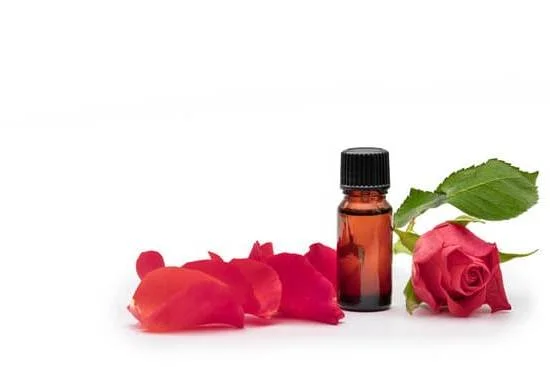Aromatherapy has been practiced for centuries, utilizing the natural scents of essential oils to promote wellbeing and healing. In this article, we will delve into the world of aromatherapy with a focus on green and white tea essential oils. From its ancient origins to modern practices, we will explore the history of using green and white tea as aromatherapy, as well as the science behind how these essential oils work.
Green and white tea have long been celebrated for their health benefits when consumed, but their aromatic properties also make them valuable in the practice of aromatherapy. These essential oils offer a wide range of benefits, from stress relief and improved mood to aiding in physical wellness such as digestion and skin health.
Throughout this article, we will also discuss various methods of incorporating green and white tea into your aromatherapy routine, including diffusers, candles, and body oils. Additionally, we will explore how these essential oils can enhance mindfulness and relaxation during meditation and yoga practices. Whether you are new to aromatherapy or a seasoned practitioner, there is much to discover about the benefits of green and white tea in this holistic approach to wellness.
History of Green and White Tea in Aromatherapy
The use of green and white tea in aromatherapy dates back centuries, with a rich history rooted in ancient traditions. In both Eastern and Western cultures, these teas have been valued for their aromatic and therapeutic properties, making them popular choices for essential oil production and aromatherapy practices.
In ancient China, green tea was not only consumed as a beverage but also used for its medicinal and calming effects. The leaves were often burned as incense to create a soothing atmosphere, while the essential oils extracted from the leaves were used in traditional medicine to promote relaxation and improve overall well-being.
Similarly, in Japan, the ceremonial preparation and consumption of matcha – a powdered form of green tea – has been an integral part of Zen Buddhist rituals, promoting mindfulness and tranquility.
As the practice of aromatherapy evolved over time, green and white tea essential oils gained recognition for their therapeutic benefits in modern wellness practices. With advancements in extraction methods and growing interest in natural remedies, the use of these essential oils has transcended cultural boundaries and become a staple in aromatherapy worldwide.
Today, they are widely utilized for their diverse applications, including stress relief, mood enhancement, mental clarity, digestion aid, skin health support, immune system bolstering, as well as guidance during meditation and yoga practices.
- Ancient Chinese and Japanese traditions
- Medicinal uses
- Evolution of aromatherapy practice
The Science Behind Aromatherapy
Green and white tea have been used for centuries for their health benefits, but their use in aromatherapy is a more recent development. The essential oils derived from green and white tea have gained popularity for their calming and rejuvenating effects. But how exactly do these essential oils work in aromatherapy?
The science behind green and white tea essential oils in aromatherapy lies in the compounds found within the plants. Both types of tea contain polyphenols, such as catechins and flavonoids, which have antioxidant properties that can help reduce inflammation and promote relaxation when inhaled. Additionally, the aroma of green and white tea essential oils can stimulate the olfactory system, sending signals to the brain that can impact emotions, mood, and even physiological responses.
When these essential oils are inhaled through methods such as diffusers or candles, they can interact with the limbic system in the brain, which is responsible for regulating emotions, behavior, and long-term memory. This interaction can lead to stress reduction, improved mood, and mental clarity. Additionally, the aromatic molecules of green and white tea essential oils can also affect neurotransmitters such as serotonin and dopamine, further contributing to feelings of well-being.
In addition to their emotional and mental impacts, green and white tea essential oils can also have physical benefits when used in aromatherapy. The anti-inflammatory properties of these oils may aid in digestion while promoting overall immune health.
Their antioxidant properties are also beneficial for skin health when used topically or in body oils during aromatherapy practices. Understanding the science behind how green and white tea essential oils work in aromatherapy helps to shed light on their potential benefits for holistic well-being.
Different Methods of Aromatherapy
When it comes to incorporating green and white tea into aromatherapy, there are several different methods to consider. Each method offers its own unique benefits and can be tailored to fit individual preferences and needs. From diffusers to candles and body oils, the options for green and white tea aromatherapy are diverse and versatile.
Diffusers
One of the most popular methods of aromatherapy is the use of diffusers. These devices disperse essential oils into the air, allowing their pleasant aroma to fill a room. For green and white tea aromatherapy, diffusers provide a gentle and consistent release of the calming scents, creating an inviting atmosphere that promotes relaxation and mental clarity.
Candles
Another way to enjoy green and white tea as aromatherapy is through candles infused with essential oils. Lighting a candle can create a soothing ambiance while releasing the therapeutic fragrance of green or white tea into the air. This method allows for a more intimate and personal experience of aromatherapy, perfect for unwinding after a long day or during moments of self-care.
Body Oils
Incorporating green and white tea essential oils into body oils is another effective method of aromatherapy. By applying these oils directly to the skin, individuals can experience both the aromatic and physical benefits of green and white tea.
These oils can help promote relaxation, soothe muscles, hydrate the skin, and provide an overall sense of well-being when used in massage or self-care rituals. Whether through diffusion, candles, or body oils, green and white tea aromatherapy offers a variety of ways for individuals to enjoy its beneficial effects on both the mind and body.
The Benefits of Green and White Tea Aromatherapy
Aromatherapy has been used for centuries as a natural way to improve overall well-being. The benefits of green and white tea as aromatherapy are vast, offering stress relief, improved mood, and mental clarity. The use of essential oils derived from these teas in aromatherapy can have a positive impact on both physical and mental health.
Stress Relief
Green and white tea aromatherapy is known for its stress-relieving properties. The aroma of these teas can help reduce cortisol levels in the body, which is the hormone associated with stress. Inhaling the scent of green and white tea essential oils can induce a sense of calm and relaxation, making it an ideal choice for those looking to alleviate daily stressors.
Improved Mood
The soothing aroma of green and white tea essential oils has been shown to enhance mood and promote feelings of well-being. Whether diffused in the air or applied topically, the scent can uplift the spirits and create a more positive atmosphere. This makes it an excellent option for those dealing with anxiety or depression, as well as for anyone seeking to improve their overall mood.
Mental Clarity
In addition to promoting relaxation and improving mood, green and white tea aromatherapy can also aid in mental clarity. The invigorating scent of these teas can help sharpen focus and concentration, making it useful for students or professionals who need to stay alert and attentive. Whether used during work hours or study sessions, the use of green and white tea essential oils can help enhance cognitive function and productivity.
Overall, incorporating green and white tea aromatherapy into your routine can have numerous benefits for both the mind and body. Whether through diffusion, topical application, or homemade blends, these teas offer a natural way to promote relaxation, uplift mood, and increase mental clarity.
Green and White Tea Aromatherapy for Physical Wellness
Aromatherapy has long been used as a natural way to promote physical wellness, and green and white tea are increasingly being recognized for their potential in this area. The essential oils derived from these teas have various properties that can aid in digestion, improve skin health, and support the immune system. Incorporating green and white tea aromatherapy into your daily routine can provide numerous benefits for your overall physical well-being.
One of the key ways that green and white tea aromatherapy can support physical wellness is through aiding in digestion. The soothing properties of these teas can help to calm the digestive system and alleviate symptoms such as bloating, gas, and discomfort. Whether used in a diffuser or applied topically through body oils, the aroma of green and white tea can have a calming effect on the stomach, promoting better digestion and overall gastrointestinal health.
Additionally, the use of green and white tea aromatherapy can contribute to improved skin health. The antioxidants present in these teas have anti-inflammatory and antimicrobial properties that can help to reduce acne, soothe irritation, and promote a healthy complexion. By incorporating green and white tea essential oils into your skincare routine through homemade blends or infused body oils, you can harness their beneficial effects for clearer, more radiant skin.
Furthermore, the immune-supporting properties of green and white tea make them valuable allies in maintaining overall physical wellness. The essential oils derived from these teas contain compounds that have been shown to possess antiviral, antibacterial, and immune-boosting effects. By incorporating green and white tea aromatherapy into your self-care regimen, whether through diffusing or using candles infused with their essential oils, you can potentially enhance your body’s natural defense mechanisms against illnesses.
Using Green and White Tea Aromatherapy in Meditation and Yoga Practices
Green and white tea have been used in aromatherapy for centuries to enhance mindfulness and relaxation during meditation and yoga practices. The soothing and calming properties of these teas make them ideal for creating a peaceful and tranquil environment that can aid in achieving a deep state of relaxation. Incorporating green and white tea aromatherapy into meditation and yoga practices can elevate the overall experience, allowing individuals to find tranquility and inner peace more easily.
Both green and white tea essential oils can be diffused using an aromatherapy diffuser, allowing the aromatic scent to fill the air, creating a serene atmosphere perfect for meditation and yoga. Additionally, adding a few drops of green or white tea essential oil to a warm bath before practicing meditation or yoga can promote relaxation and reduce stress. The use of these essential oils in aromatherapy candles can also add an extra element of calmness to the practice.
Studies have shown that the aroma of green and white tea has anxiolytic effects, promoting a sense of well-being, reducing stress levels, and enhancing mood. These effects are particularly beneficial when it comes to meditation and yoga practices as they help individuals achieve a deeper state of mindfulness by reducing mental chatter and promoting relaxation.
| Benefit | Description |
|---|---|
| Mental Clarity | The aroma of green and white tea essential oils promotes mental clarity, helping practitioners achieve a deeper state of mindfulness during meditation. |
| Stress Relief | Inhaling the soothing scent of green or white tea essential oils helps reduce stress levels, allowing individuals to relax more deeply during yoga practices. |
| Enhanced Relaxation | The calming properties of green and white tea essential oils create an environment conducive to relaxation, making meditation more effective. |
DIY Aromatherapy Blends and Recipes
In conclusion, the use of green and white tea as aromatherapy has a long history rooted in ancient traditions and is now widely practiced in modern times. The essential oils derived from these teas have been found to offer a wide range of benefits for mental and physical wellness.
From stress relief and improved mood to aiding in digestion and supporting the immune system, the use of green and white tea essential oils in aromatherapy can have a positive impact on overall well-being.
Furthermore, the science behind how green and white tea essential oils work in aromatherapy has provided insight into their therapeutic properties. Whether used in diffusers, candles, or body oils, these essential oils can promote relaxation, enhance mindfulness during meditation and yoga practices, and even improve skin health. The versatility of green and white tea aromatherapy makes it a valuable tool for self-care and holistic health.
For those interested in incorporating green and white tea aromatherapy into their daily routine, creating DIY blends and recipes at home can be a rewarding experience. By experimenting with different combinations of essential oils and natural ingredients, individuals can personalize their aromatherapy products to suit their specific needs.
In doing so, they can further explore the benefits of green and white tea as aromatherapy while engaging in a creative process that adds an extra layer of enjoyment to their wellness journey.
Frequently Asked Questions
What Are the Benefits of White Tea Essential Oils for Aromatherapy?
White tea essential oils offer numerous benefits for aromatherapy. They have a delicate and soothing aroma that can promote relaxation and reduce stress. The oils are also known for their antibacterial, anti-inflammatory, and antioxidant properties.
What Are the Benefits of Green Tea Aromatherapy?
Green tea aromatherapy provides several benefits as well. The fragrance of green tea essential oils is refreshing and invigorating, making it an excellent choice for boosting mood and increasing alertness. In addition, the oils are believed to have antimicrobial and anti-aging effects.
What Blends Well With White Tea Essential Oil?
White tea essential oil blends well with citrus oils like bergamot, lemon, or lime, adding a bright and uplifting note to the blend. It also complements floral scents such as jasmine or rose, enhancing the overall aromatic profile with its subtle and fresh fragrance.
Additionally, white tea oil pairs nicely with herbal oils like lavender or chamomile to create a relaxing and calming blend for aromatherapy purposes.

Are you looking for a natural way to improve your health and wellbeing?
If so, aromatherapy may be the answer for you.





